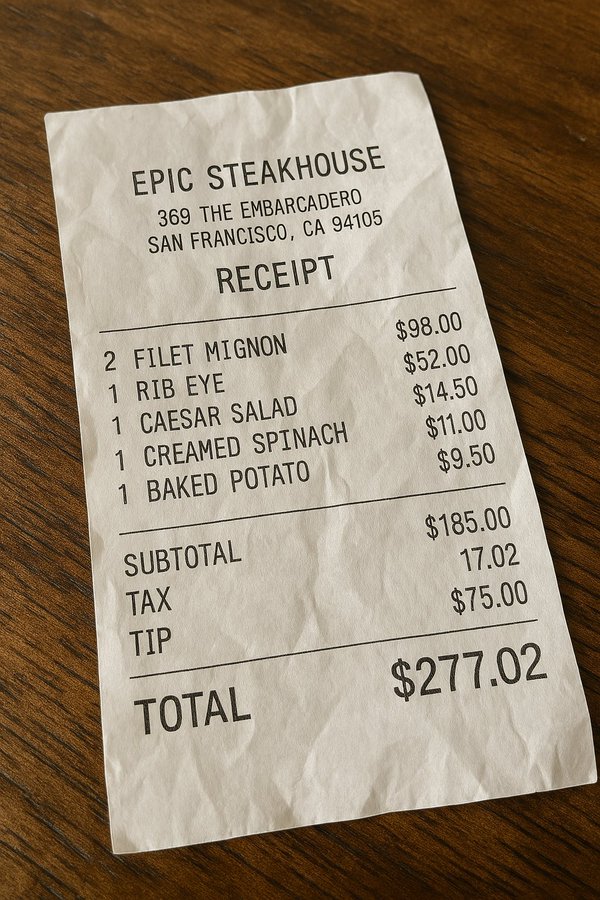OpenAI’s latest ChatGPT upgrade can now create realistic fake receipts with just a simple text prompt. This new ability is raising concerns about expense fraud and questions about how companies verify digital images.
Released on March 25, 2025, the GPT-4o image generator improves the model’s text rendering in images. Users quickly found they could make authentic-looking restaurant receipts that show itemized expenses and dates and even add realistic touches like food stains or crumpled paper.
“You can use 4o to generate fake receipts. There are too many real-world verification flows that rely on ‘real images’ as proof. That era is over,” wrote venture capitalist Deedy Das on social media. He shared an example of a receipt generated by a San Francisco restaurant.


Source: Twitter
These fake receipts aren’t perfect. They often have math errors or misuse punctuation in the totals. Still, they look real enough for someone not to notice these mistakes at a glance.
Many businesses ask employees to upload photos of receipts to verify expenses. This makes them vulnerable to this new type of digital deception.
“When you submit stuff for HR, if you’re an employee that’s a little shady, you could potentially get some money from fraudulent receipts,” Jon Clay, VP in threat intelligence at Trend Micro, told Metro News.
On LinkedIn, user Raphael Chenol showed how easily ChatGPT could change an existing receipt. He noted that his “expense report entry application doesn’t see anything wrong” with the fake receipt.
OpenAI spokesperson Taya Christianson defended the technology. She told TechCrunch that all ChatGPT-generated images include special data showing they were made by artificial intelligence (AI). “Our goal is to give users as much creative freedom as possible,” she said. She suggested fake receipts could have good uses, like “teaching people about financial literacy.”
Security experts doubt these safeguards will work. The special data can be easily removed, and most systems that check receipts can’t detect AI-generated images. Some experts suggest businesses use two-step verification or technologies like QR codes to confirm receipts are real.
This development shows the growing challenge of balancing new AI abilities with security concerns. As image generation gets better, traditional ways of checking if something is real are becoming less effective.


Source: Twitter
Fake receipts for both made-up restaurants like “TasteRadar” in London and real businesses like Applebee’s are already spreading on social media. This shows how quickly people have started using this technology.
“As this technology gets out there and if there if we see a lot more abuses of the technology, we might see lawmakers start to recognise” the need for new rules, Clay added. But he noted, “if I’m a bad actor, I’m not going to follow the law.”




















